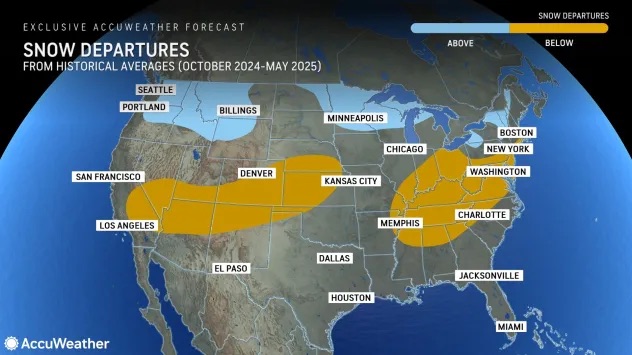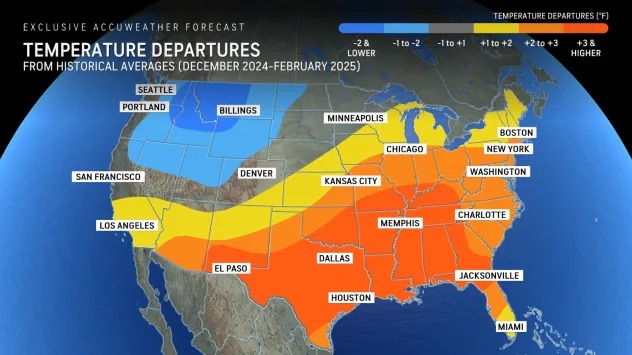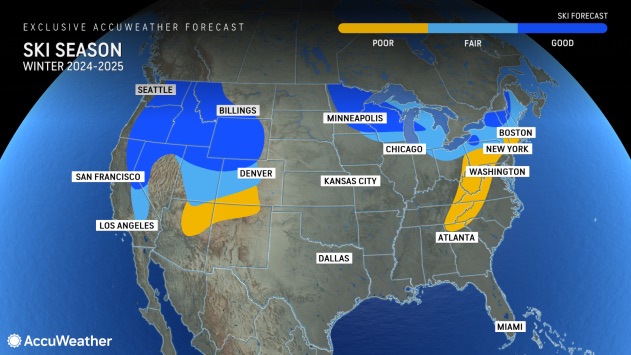AccuWeather’s U.S. winter 2024-25 forecast predicts a season of meteorological twists and turns, with mild temperatures for most of the country interspersed with periodic waves of frigid air. The forecast, written by Brian Lada, AccuWeather meteorologist and senior content editor, suggests that while the winter may start and end with significant snow events, the middle of the season could see milder conditions.
- Related: [UPDATED: SEPTEMBER] NOAA Winter 2024-25 Early Forecast: La Niña Returns and What That Means For the Ski Season
- Related: Median Dates for First Measurable Snowfall of the Year in North America
Three key factors are shaping this winter’s outlook: a weak La Niña, the potential for polar vortex disruptions, and above-average water temperatures in the Gulf of Mexico and parts of the Pacific Ocean. These elements combine to create a complex weather pattern that may vary significantly across different regions of the United States.
“Meteorological winter is just around the corner, officially beginning in less than two months on Sunday, Dec. 1. The season will have some meteorological twists and turns that may end with a surge of snow and blasts of bitterly cold air. #winter #forecast #accuweather
As people prepare their skis and snowblowers with snow on their minds, AccuWeather forecasters predict that the season will be mild for most of the United States, similar to last winter, which was the warmest on record. However, that is only part of the story, as waves of frigid air will periodically send freezing air across the country, along with more chances for snow.”

Residents in the Northeast and Midwest can expect more snow than last winter, with an increased likelihood of lake-effect snow events in December. However, January might bring a reprieve with milder air and less snowfall. February could see a resurgence of winter conditions, including polar vortex-driven cold snaps and multiple snowstorms.
The southern and central U.S. are anticipated to experience warmer-than-average temperatures throughout winter. This warmth could lead to lower household heating bills but may also contribute to drought conditions in some Gulf Coast states. The mild weather pattern also raises concerns about an increased risk of severe weather events in these regions during winter.

On the West Coast, the forecast suggests a wet start to the season, with atmospheric rivers bringing substantial precipitation to the Northwest and Northern California. As the winter progresses, the storm track is expected to shift southward, potentially bringing much-needed rainfall to Southern California and the Southwest in January.
Skiers may find favorable conditions in the Western mountains early in the season, but Southern California ski resorts might face an early end to their season as the weather pattern shifts in February.
While this forecast provides a general outlook, local conditions can vary significantly. As always, you should stay informed about short-term forecasts and be prepared for changing weather conditions throughout the winter.
